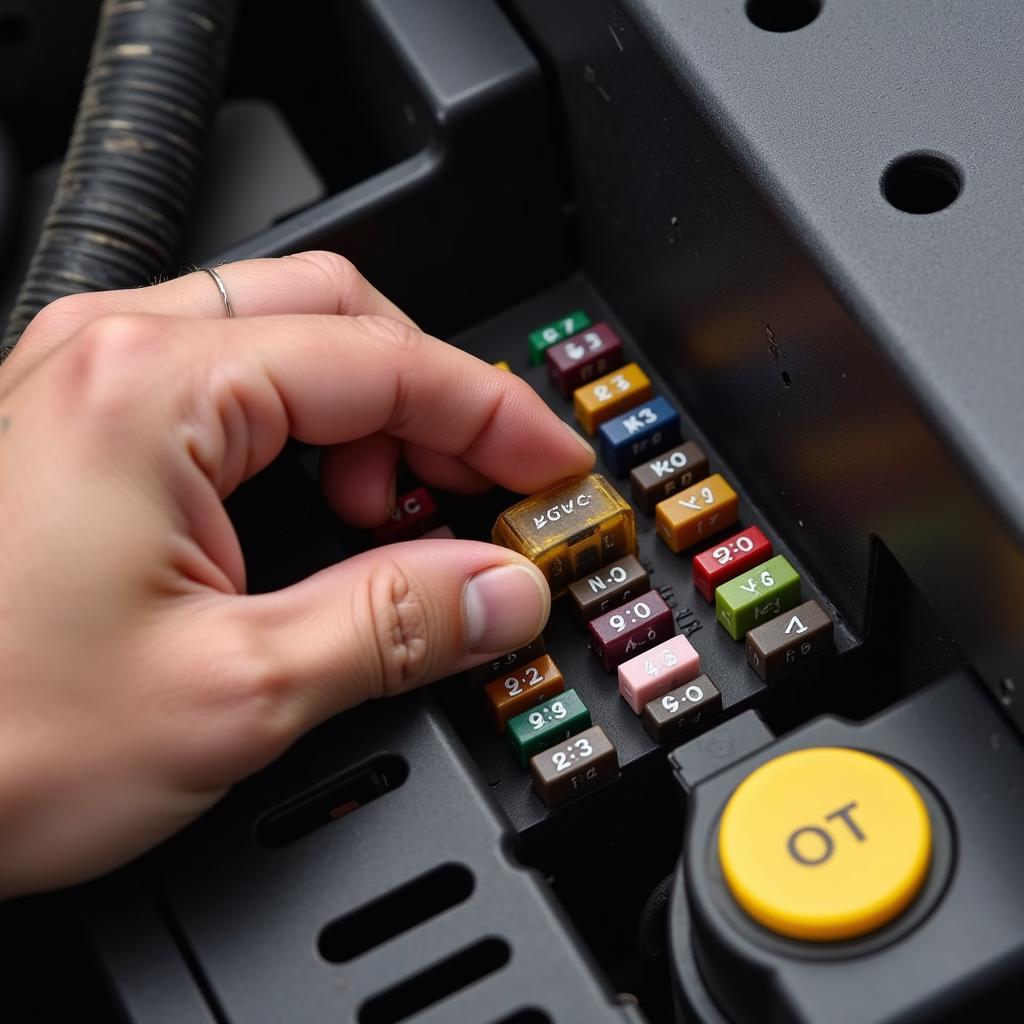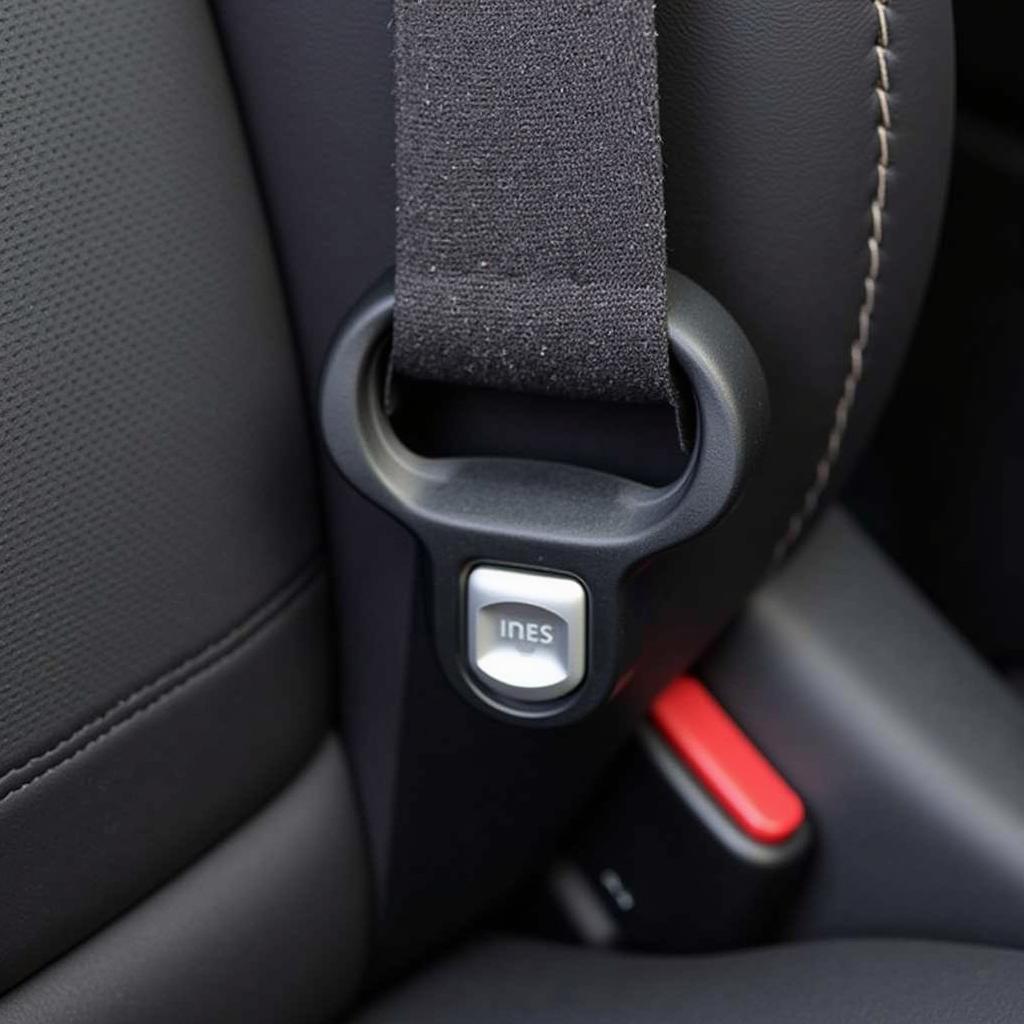A dead car battery is a frustrating experience. Often, the culprit isn’t a faulty battery, but a parasitic draw, slowly draining its power. Understanding how to perform a parasitic car battery drain test is crucial for identifying and resolving this issue. This guide provides a comprehensive walkthrough, empowering you to diagnose and fix that pesky drain.
What is a Parasitic Draw and Why Should You Care?
A parasitic draw, also known as a parasitic drain or dark current, refers to the electrical current that continues to flow even when your car is turned off. While a small amount of current is normal for things like the clock and security system, an excessive draw can deplete your battery overnight, leaving you stranded. Identifying and eliminating this energy thief is vital for maintaining a healthy battery and avoiding unexpected breakdowns. After completing the parasitic car battery drain test, consider upgrading your car’s audio system with a classic car bluetooth radio for a modern touch.
How to Perform a Parasitic Car Battery Drain Test
Performing a parasitic battery drain test is relatively straightforward. Here’s a step-by-step guide:
- Gather your tools: You’ll need a digital multimeter with a 10A DC current setting and possibly some alligator clips for easier connections.
- Prepare your vehicle: Turn off all lights, accessories, and ensure the doors are closed and locked. Let the car sit for about 30 minutes to allow any modules to go to sleep. This is an important step as certain systems can continue drawing power for a period after the ignition is turned off.
- Disconnect the negative battery terminal: Carefully remove the negative cable from the battery terminal. Be sure not to touch the positive terminal with any metal objects.
- Connect your multimeter: Set your multimeter to the 10A DC current range. Connect the red lead of the multimeter to the negative battery terminal and the black lead to the disconnected negative cable.
- Observe the reading: The multimeter will display the amount of current flowing. A reading of 50 milliamps (0.05 amps) or less is generally considered acceptable. Anything higher indicates an excessive parasitic draw.
Pinpointing the Culprit: Identifying the Source of the Drain
If your parasitic car battery drain test reveals an excessive draw, the next step is to locate the source. This can be done by systematically removing fuses one by one while observing the multimeter reading. When the reading drops significantly after removing a particular fuse, you’ve likely identified the circuit containing the problematic component.
Using a Test Light for Parasitic Drain Testing
Alternatively, you can use a test light connected in series like the multimeter. A bright light indicates a high current draw, while a dim light suggests a smaller draw. This method is less precise but can be useful for quickly isolating circuits with large parasitic draws. Think of it like searching for a water leak in your house. You start by checking the main areas first and then narrow it down.
“A common mistake people make is not letting the car’s electrical systems fully power down before starting the test. This can lead to false readings and wasted time,” explains John Smith, Senior Automotive Electrical Diagnostic Technician at Acme Auto Repair.
Common Causes of Parasitic Battery Drain
Several components can contribute to excessive parasitic drain. Some common culprits include:
- Interior lights: A faulty door switch or a glove box light that stays on can drain your battery.
- Faulty alternator: A failing alternator can draw excessive current even when the engine is off.
- Stereo system: Aftermarket stereos improperly wired can be a significant source of parasitic drain. Consider switching to a bluetooth vintage car radio for a more efficient and integrated audio system.
- Alarm system: Malfunctioning alarm systems can contribute to battery drain.
- Clock and other electronic modules: While these typically draw minimal current, a faulty module can increase the drain.
 Checking Car Fuse Box
Checking Car Fuse Box
Preventing Parasitic Battery Drain
Taking preventative measures can help avoid parasitic drain issues. Here are some tips:
- Regular inspections: Periodically inspect your car’s electrical system for any signs of damage or wear.
- Proper installation of aftermarket accessories: Ensure all aftermarket accessories, especially stereo systems, are professionally installed. Check out our black bluetooth vintage car radio mp3 for a reliable and stylish option.
- Address electrical issues promptly: Don’t ignore warning signs like dimming lights or slow cranking.
Conclusion
Understanding how to perform a parasitic car battery drain test is a valuable skill for any car owner. By following these steps and taking preventative measures, you can keep your battery healthy, avoid unexpected breakdowns, and save yourself time and money. Performing this test empowers you to take control of your car’s electrical health and stay on the road. If you’re looking for a seamless audio integration for your classic car, explore our toogoo bluetooth vintage car radio.
FAQ
- How often should I perform a parasitic car battery drain test? If you suspect a drain or experience frequent dead batteries, it’s best to test immediately. As a preventative measure, you can test it every six months.
- What is a normal parasitic draw reading? A reading of 50 milliamps (0.05 amps) or less is generally acceptable.
- What tools do I need for the test? You need a digital multimeter with a 10A DC current setting and possibly alligator clips.
- Can I perform this test myself? Yes, the test is relatively straightforward and can be performed by most car owners.
- What should I do if I find an excessive drain? Systematically remove fuses to isolate the circuit causing the drain. If you’re not comfortable working on your car’s electrical system, consult a qualified mechanic.
- Can a bad battery cause a parasitic draw? No, a bad battery will not cause a parasitic draw. However, a parasitic draw can drain a good battery.
- Can I use a bluetooth classic car radio in my vintage car? Absolutely! Many modern Bluetooth radios are designed to fit seamlessly into classic car dashboards.



